Conflict Zones
‘Missiles in skies’: Panic in Indian frontier cities as war clouds gather | India-Pakistan Tensions News
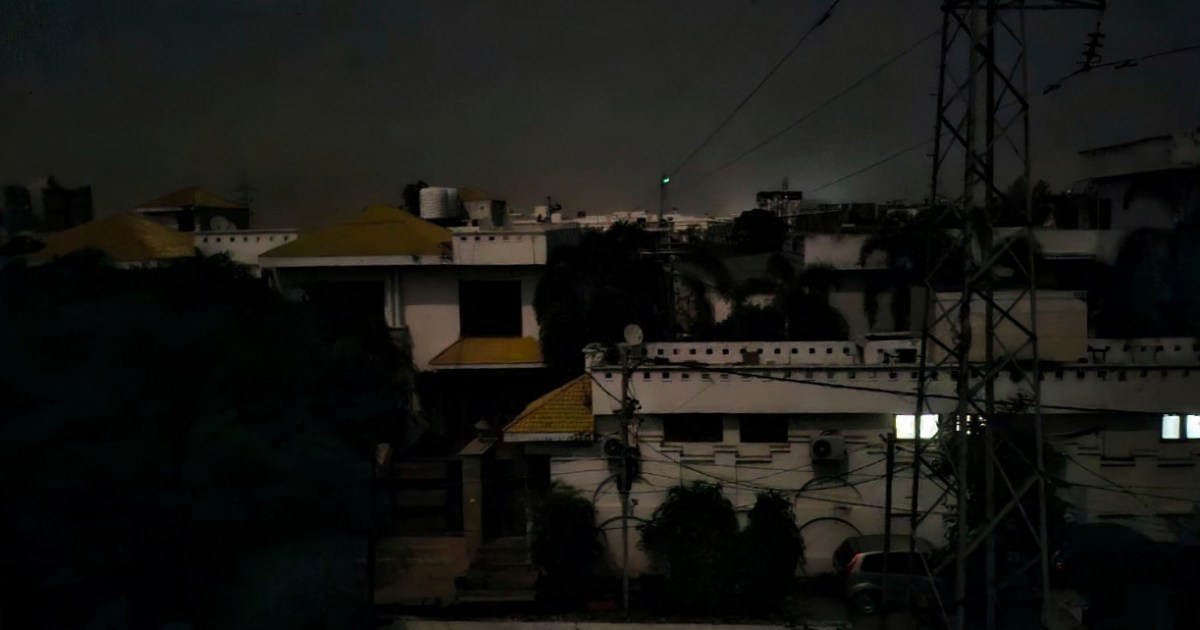
New Delhi, India — Aqib Parray was standing at a local shop near his home in Jammu, in Indian-administered Kashmir, when all the lights went out late in the evening on Thursday, May 8. Loud bangs followed.
Panicked, everyone on the streets started rushing home, 24-year-old Parray said. From the terrace of his home, he said, “I saw that the missiles were scattered in the skies.” Then his internet also went off. “We have never seen Jammu like this.”
Two generations of Indians and Pakistanis have not witnessed a fully fledged war, with blackouts and the threat of missiles raining on them even if they are far from any battlefield. In 1999, the nations fought a war over the icy heights of Kargil, but the conflict was contained.
Now, as India and Pakistan edge closer to a fully fledged war, millions of people on both sides are witnessing scenes unprecedented in their lifetimes. They include the 750,000 people of Jammu, and millions more in Indian cities that on Thursday evening came under attack, according to the Indian government.
Eight missiles were fired from Pakistan-origin drones towards Jammu and nearby areas of Satwari and Samba, also targeting military stations in Udhampur and Indian Punjab’s Pathankot, said India’s Ministry of Defence. India says they were all brought down with no casualties.
Shortly after, Pakistan’s Information Minister Attaullah Tarar denied that the country had targeted any locations in Indian-administered Kashmir or across the international border.
Yet the mounting anxiety across cities in India and Indian-administered Kashmir close to the frontier with Pakistan and Pakistan-administered Kashmir is real. Seventeen days after gunmen killed 26 civilians in Indian-administered Kashmir’s Pahalgam, and two days after India hit at least six Pakistani cities with missiles, the prospect of a war looms over communities close to the border.
‘Sleepless nights’
Soon after dusk, authorities in Indian Punjab issued complete blackout orders in several districts, including its capital city of Chandigarh, and Jalandhar, Pathankot and Mohali.
Sabarpreet Singh, a 46-year-old businessman from Amritsar, Punjab’s second-largest city, said he is learning to react during sudden blackouts. “Things are changing very quickly. I have not been able to sleep at night,” he said. “I’m thinking of leaving the city with my children [and wife]; they are scared when sirens go off.”
Late on Wednesday, a blackout was imposed in parts of Kutch, in Gujarat; and in bordering areas of Rajasthan, where the border with Pakistan goes through the Thar Desert.
The situation is much more dire along the Line of Control, the de facto border that divides disputed Kashmir between India and Pakistan. Both armies traded heavy artillery as civilian injuries and deaths continued to rise. Amid gunfire, India has moved to evacuate thousands of people, who now sleep in shelters overnight.
“There were attempts to target military sites in Jammu, including the defence airport,” a local intelligence official told Al Jazeera, requesting anonymity because he was not authorised to speak with the media. “We have confidence in [Indian] defence systems, however, the security situation is deteriorating. We are monitoring every moment closely.”
That India should be on edge is understandable, said Praveen Donthi, a senior analyst at the International Crisis Group.
After India struck deep inside Pakistan and Pakistan-administered Kashmir on May 7, killing at least 31 people – “terrorists” according to India, civilians (including two children) according to Pakistan – Islamabad and its military are under immense pressure to respond forcefully, he said.
“Pakistan was bound to retaliate. Neither the government nor the civil society in Pakistan was willing to de-escalate without a response,” Donthi said.
‘Senseless belligerence’
In a media briefing on Thursday, New Delhi said that Pakistan had earlier that day attempted to “engage military targets” in several cities in India and Indian-administered Kashmir, including Srinagar and Amritsar, using drones and missiles.
While Indian officials said that forces “neutralised” these attempts, New Delhi said it responded by targeting Pakistan’s air defence systems at several locations, including in Lahore, Pakistan’s second-biggest city.
Islamabad said its air defence system brought down 25 Indian drones overnight in several cities, including Lahore and Karachi. At least one civilian has died, and five people were wounded, the Pakistani military said.
India’s Foreign Secretary Vikram Misri reiterated on Thursday that any forthcoming Pakistani attack would be responded to by New Delhi. He insisted that India was merely responding to escalation by Pakistan, also referring to the Pahalgam attack as “the original escalation point”.
Pakistan’s Ministry of Foreign Affairs responded by denying any attacks on India or Indian-administered Kashmir, noting, “Any escalation based on false pretences will be met with full resolve and determination.”
Referring to global calls for restraint and de-escalation, Sumantra Bose, a political scientist focusing on the intersection of nationalism and conflict in South Asia, said, “The situation needs an urgent intervention by the international community, with effective diplomatic efforts to de-escalate.”
“There is no support in the world for this senseless conflict,” said Bose, which he said, “has been rather mismanaged – and should never have been allowed to get to this point.”
“Things have gotten out of hand very quickly and it is looking to get worse,” he said, reacting to the drone warfare and the alleged attacks on Jammu. “In the escalatory spiral, it is just retaliations; an endless loop of retaliations from both sides.”
Later on Thursday, US State Department spokesperson Tammy Bruce said, “We are remaining engaged with both governments at multiple levels.”
Acknowledging that Pakistan wants an “independent investigation” into the Pahalgam attack, Bruce said that the United States wants “the perpetrators to be held accountable and are supportive of any efforts to that end.”
However, Indian Foreign Secretary Misri had already rejected the calls for an independent investigation earlier in a media briefing, citing “no confidence in the Pakistani establishment for cooperation”.
The Trump administration, Donthi said, had, at least until May 7, “appeared willing to let the situation unfold between India and Pakistan”.
“Unless the US and other international powers intervene more proactively to defuse the situation, it could lead to a full-blown war,” Donthi told Al Jazeera.
Bose, the political scientist, argued that “it is already a state of war.”
“It would be much worse unless there is urgent, and effective, diplomatic intervention that makes the key decision makers, namely the Indian government and Pakistan’s military, to end this senseless belligerence and the spiral of escalation.”
Conflict Zones
‘Slippery slope’: How will Pakistan strike India as tensions soar? | India-Pakistan Tensions News
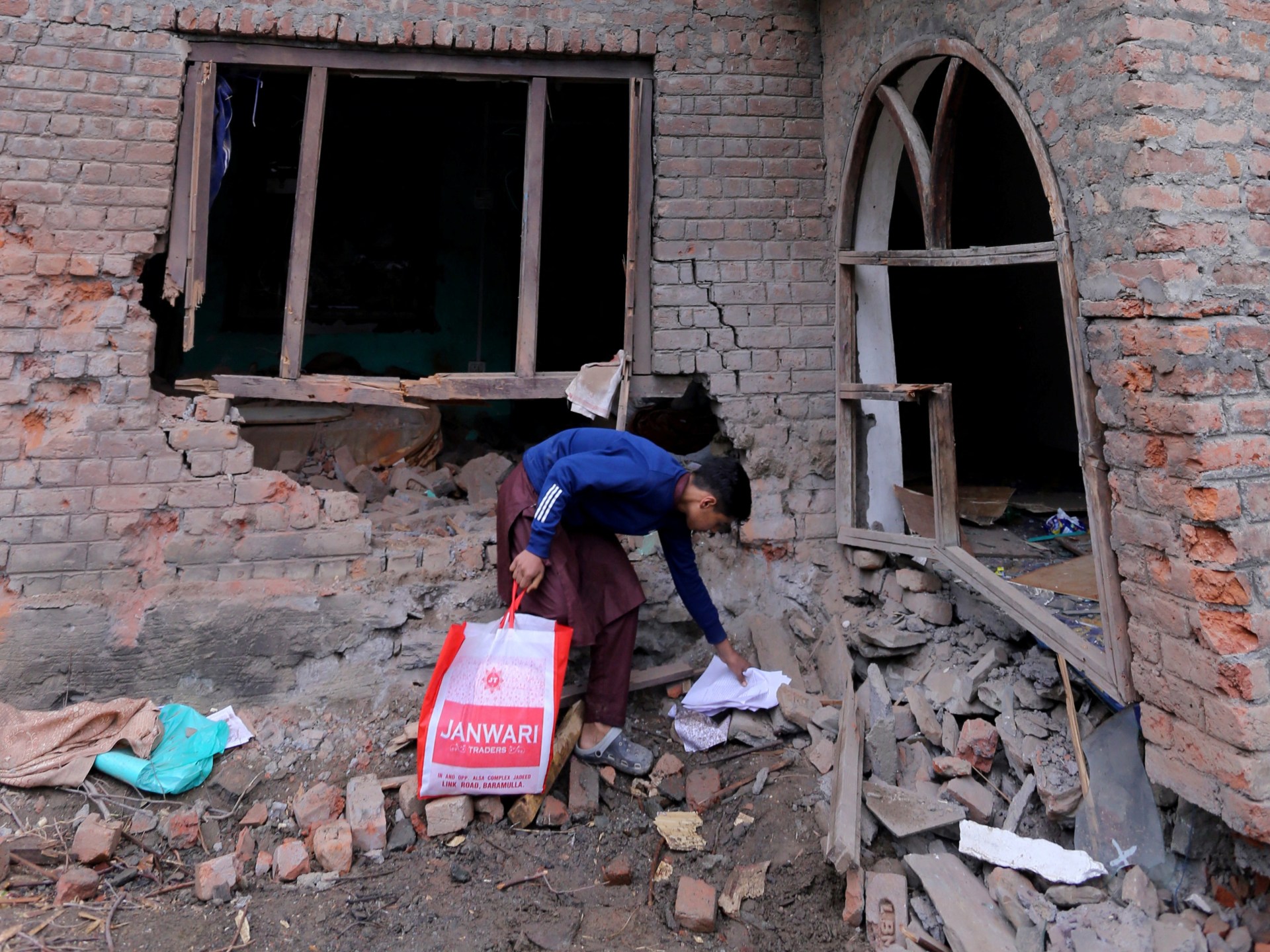
Islamabad, Pakistan – On Wednesday evening, as Pakistan grappled with the aftermath of a wave of missile strikes from India that hit at least six cities, killing 31 people, the country’s military spokesperson took to a microphone with a chilling warning.
“When Pakistan strikes India, it will come at a time and place of its own choosing,” Lieutenant General Ahmed Sharif Chaudhry said in a media briefing. “The whole world will come to know, and its reverberation will be heard everywhere.”
Two days later, India and Pakistan have moved even closer to the brink of war.
On Thursday, May 8, Pakistan accused India of flooding its airspace with kamikaze drones that were brought down over major cities, including Lahore and Karachi. India confirmed the drone assault, but said it was responding to a provocation from Pakistan — missiles and drones launched towards cities and air defence systems in India and Indian-administered Kashmir. Pakistan denied that charge, and subsequent accusations of missile and drone attacks on parts of Indian-administered Kashmir on Thursday night.
With Pakistan denying any missile or drone strikes against India, Chaudhry’s warning of upcoming retribution remains alive, hovering over the 1.6 billion people of South Asia, 17 days after armed gunmen killed 26 male civilians in Pahalgam, Indian-administered Kashmir, triggering the current escalation.
Experts say how Pakistan responds will likely be shaped by its desire to demonstrate that it can hurt India, without pushing the crisis over the edge into a full-blown conflict.
“We are still far away from a war, but we are much closer than we were 24 hours ago,” said Christopher Clary, assistant professor of political science at the University at Albany.

Next target: Military bases?
Clary said that the next “logical escalatory” step for both countries might be to target each other’s military bases.
“We have already seen this with air defence-focused strikes,” Clary told Al Jazeera, referring to the Indian drone attacks that tried to target Pakistani radar systems overnight on May 7-8, and New Delhi’s claims that Pakistan launched missiles and drones towards its military facilities.
“But I fear other strikes are likely in the next 24 hours. I think we are still several days from de-escalation,” Clary said, adding that more deaths are likely.
India and Pakistan have been at loggerheads since gaining independence from British colonial rule in August 1947, especially over the scenic Kashmir Valley in the northwestern subcontinent. Both control parts of it, with China in control of two thin slices. India claims all of Kashmir, while Pakistan claims all of Kashmir except the parts held by China, its ally.
They have fought multiple wars over Kashmir. The last major escalation occurred in February 2019, when India accused Pakistan of supporting armed groups responsible for a suicide bombing that killed 40 Indian soldiers in Pulwama, in Indian-administered Kashmir.
In response, India crossed the border for the first time since the 1971 war, launching air strikes in Balakot, Pakistan’s northwest, claiming to have hit “terrorist infrastructure” and having killed “hundreds of fighters”.
Pakistan countered that the area was a forest and reported no casualties. It responded the next day with its own fighter jets, leading to a dogfight and the downing of an Indian jet. The captured pilot, Abhinandan Varthaman, was later returned to India, easing tensions.
Kamran Bokhari, senior director at the New Lines Institute for Strategy and Policy in Washington, DC, called the current situation “much more dangerous” than in 2019.
India, he said, appeared to be locked into an “escalatory spiral”.
“In case Pakistan makes a move, India will respond and up the ante,” he said.
“This is a new situation for Pakistan. For the military to say that it will respond in a time of its own choosing suggests they want to think it through, to strike in a manner that does not lead to escalation. But how that materialises is a function of capability and constraint.”

‘A deliberate response’
It took India 12 days to respond to the Pulwama killings with the Balakot strike in 2019. In the current conflict, the Indian response took even longer, 15 days, via “Operation Sindoor,” which struck multiple Pakistani cities, including ones in Punjab, close to the Indian border.
Some analysts argue that while Pakistan has so far calibrated its response diplomatically and militarily, the drone strikes on Thursday morning marked a “serious escalation”.
“The military is expected to respond in a manner that is firm and resolute, drawing on both public and political support. The scale of Pakistan’s response will be quite telling,” said Arsla Jawaid, associate director at global consulting firm Control Risks, while speaking to Al Jazeera.
She said Pakistan is likely to opt for precision strikes targeting Indian military assets while avoiding civilian casualties.
“This could issue a decisive response while minimising further escalation. The latter will be a critical calculation in any Pakistani response,” she added.
Sahar Khan, a Washington, DC-based security analyst focused on South Asia, agreed that Pakistan will “definitely” respond.
Khan said India had crossed several “red lines,” including suspending the Indus Waters Treaty after the Pahalgam attack, and launching missile and drone attacks. The Indus Waters Treaty (IWT), mediated by the World Bank and signed in 1960, governs the distribution of Indus River waters, critical for millions across the subcontinent, particularly in Pakistan.
“The question is, what will they [the Pakistani military] target? That will determine the escalation dynamics and the eventual off-ramps,” she told Al Jazeera.
“I think Pakistan will retaliate, showcasing its military capabilities. Its defence systems remain intact, and that is an added incentive to respond,” Khan added.
‘Who blinks first?’
With brinkmanship at its peak and both sides locked in aggressive posturing, the greatest fear remains that even a small miscalculation could lead to a fully fledged war between two nations with more than 150 nuclear weapons each.
Bokhari warned that India’s strikes in Punjab, Pakistan’s most populous and prosperous province, marked a dangerous precedent.
“By attacking Punjab, which was almost unthinkable, India has now made this the new normal. This is a real slippery slope,” he said.
Jawaid concurred, noting that drone strikes on Pakistani urban centres also suggest a shift in red lines.
“That opens the door to a sustained and heightened risk of escalation, which is deeply problematic due to the risk of miscalculation on both sides. We are in a case of who blinks first,” she said.
But Khan believes that there are a few potential off-ramps.
“The first is the international community, such as the US, China, and Russia, urging restraint. The second is for India and Pakistan to show willingness to redefine red lines, like India agreeing to the IWT again and Pakistan agreeing not to strike Indian military targets,” she said.
Jawaid, however, warned that even if India and Pakistan avoid a war, their already deeply strained equation has changed – there’s a new normal that will define it.
“The longer this is sustained, the more challenging it becomes,” she said. “The bilateral relationship is already fraught with heightened tensions, which will continue even if the current conflict settles down, especially due to unresolved issues around natural resources and Kashmir, which remains a flashpoint.”
Conflict Zones
India-Pakistan tensions: A brief history of conflict | India-Pakistan Tensions News
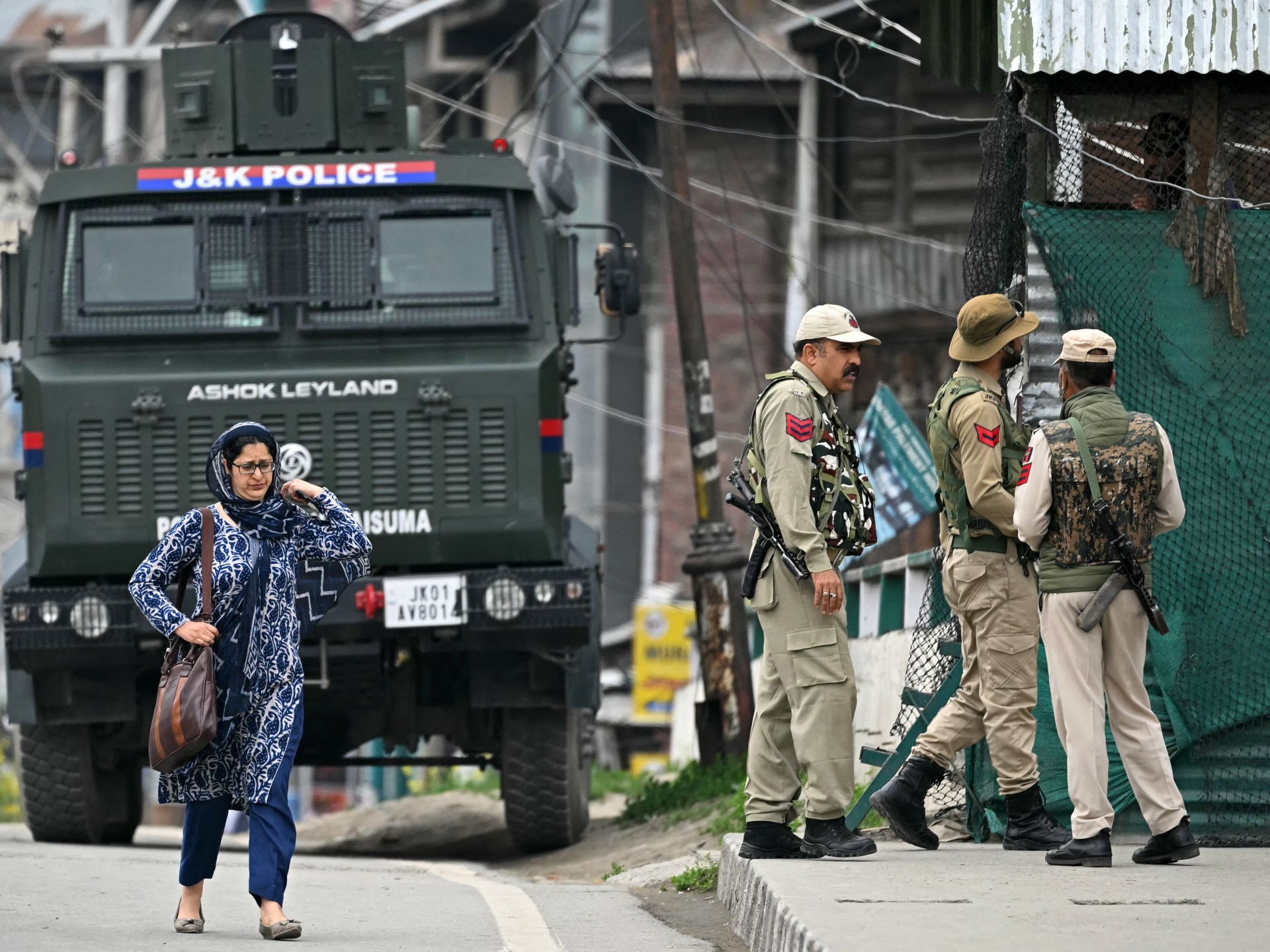
India and Pakistan are locked in a rapidly escalating military exchange that threatens to explode into a fully fledged war, triggered by a deadly attack on tourists in Indian-administered Kashmir on April 22 in which 26 civilians were killed, but rooted in decades-old hostilities.
On May 7, India launched a wave of missiles into Pakistan and Pakistan-administered Kashmir, striking at least six cities and killing at least 31 people – including two children – according to Islamabad. Since then, Indian drones have hit major Pakistani cities and military installations, and India has accused Pakistan to launching a barrage of missiles and drones at its cities and military facilities.
Alongside the missiles and drones, the nuclear-armed neighbours have also traded allegations and denials. India says its May 7 missiles only struck “terrorist infrastructure” while Pakistan insists civilians were killed. Pakistan denies that it launched missiles or drones towards India, and both claim to be victims of the other’s aggression.
Yet the origins of this latest crisis between India and Pakistan go back to their very formation as sovereign nation states in their current form. Here is a recap of the state of near-constant tensions between the South Asian neighbours.
1940s-50s: A tale of two countries
The Indian subcontinent was a British colony from 1858 until 1947, when British colonial rule finally ended, splitting the subcontinent into the two countries. The Muslim-majority Pakistan gained its independence on August 14 that year as non-contiguous and culturally distant zones, West Pakistan and East Pakistan. The Hindu-majority but secular India gained its independence on August 15, 1947.
The partition was far from smooth, causing one of the largest and bloodiest human migrations ever seen, displacing about 15 million people. The process also sparked horrific communal violence and riots between Muslims, Hindus and Sikhs across the region, in which between 200,000 and two million people died. Border disputes and separatist movements sprang up in the aftermath.
What stuck out as a major sticking point between the neighbours was the question of where the Muslim-majority Himalayan region, Kashmir, would go. The monarch of Kashmir initially sought independence and the area remained disputed.
In October 1947, the first war over Kashmir broke out when armed Pakistani tribesmen invaded the territory. The monarch of Kashmir asked India for its assistance in driving out the tribesmen. In return, the monarch accepted India’s condition for help – that Kashmir join India.
Fighting continued until 1948, when it ended with Kashmir divided. Pakistan administers the western part of Kashmir, while India administers much of the rest, with China holding two thin slices of Kashmir’s north. India claims all of Kashmir, while Pakistan also claims the part that India holds but not what China, its ally, holds.
1960s: Failed Kashmir talks and the second war
The decade started with a promise of better ties. In 1960, India and Pakistan signed the Indus Waters Treaty, a World Bank-mediated deal under which they agreed to share the waters of the six Indus Basin rivers they both relied – and still rely – on.
The treaty gives India access to the waters of the three eastern rivers: the Ravi, Beas and Sutlej. Pakistan, in turn, gets the waters of the three western rivers: the Indus, Jhelum and Chenab. After the April 22 Pahalgam attack, India has suspended its participation in the treaty but until recently, the deal stood as a shining example, internationally, of a water-sharing pact that survived multiple wars.
One of those wars would take place in the 1960s.
In 1963, the then-foreign minister of India, Swaran Singh and his Pakistani counterpart, Zulfiqar Ali Bhutto, held talks over the disputed territory of Kashmir. These talks were mediated by the United States and the United Kingdom.
While exact details of the discussions were not made public, no agreement was reached. In 1964, Pakistan referred the Kashmir case to the United Nations.
In 1965, the two countries fought the second war over Kashmir after between 26,000 and 33,000 Pakistani soldiers dressed as Kashmiri residents crossed the ceasefire line into Indian-administered Kashmir.
As the war escalated, Indian soldiers crossed the international border into Pakistan’s Lahore. The war ended inconclusively, with a ceasefire. In 1966, Indian Prime Minister Lal Bahadur Shastri and Pakistani President Mohammad Ayub Khan signed an agreement in Tashkent, mediated by the Soviet Union, restoring diplomatic and economic relations.
1970s: Bangladesh and the first step towards a nuclear race
In 1971, East Pakistan and West Pakistan went to war after then-president Zulfikar Ali Bhutto refused to let Sheikh Mujibur Rahman, the leader of the East Pakistan-based Awami League, assume the premiership. This was despite the fact that the Awami League won the majority of seats in Pakistan’s 1970 parliamentary elections.
In March, the Pakistani military began a crackdown in East Pakistan’s Dhaka and in December, the Indian army got involved. The Pakistani army eventually surrendered. East Pakistan became the independent country of Bangladesh.
In 1972, Bhutto and Indian PM Indira Gandhi signed an agreement in the Indian town of Simla, called the Simla Agreement where they agreed to settle any disputes by peaceful means.
The agreement established the Line of Control (LoC) between the two countries, which neither side is to seek to alter unilaterally, and which “shall be respected by both sides without prejudice to the recognised position of either side”.
In 1974, Kashmir’s state government affirmed that it “is a constituent unit of the Union of India,” an accord rejected by Pakistan.
In the same year, India detonated a nuclear device in an operation codenamed “Smiling Buddha”. India deemed the device a “peaceful nuclear explosive”.
1980s: The rebellion in Kashmir
By the early 1980s, Kashmir was back at the centre of India-Pakistan tensions. A separatist movement took root, as popular sentiment started turning against the elected government of Indian-administered Kashmir, which many locals felt was betraying their interests in exchange for close ties with New Delhi.
A tipping point was the 1987 election to the state legislature, which saw the National Conference, a party committed to the Indian Constitution, win amid widespread allegations of heavy rigging to keep out popular, anti-India politicians.
By 1989, a full-blown armed resistance against India had taken shape in Indian-administered Kashmir, seeking secession from India.
New Delhi has consistently accused Islamabad of financing, training and sheltering these armed groups, who India describes as “terrorists”. Pakistan has insisted that it only offers “moral and diplomatic” support to the separatist movement, though many of those groups have bases and headquarters in Pakistan.
1990s: More agreements, nuclear tests and the Kargil conflict
In 1991, both countries signed agreements on providing advance notification of military exercises, manoeuvres and troop movements, as well as on preventing airspace violations and establishing overflight rules.
In 1992, they signed a joint declaration banning the use of chemical weapons.
In 1996, after a series of clashes, military officers from the countries met at the LoC in order to ease tensions.
In 1998, India detonated five nuclear devices. Pakistan responded by detonating six nuclear devices of its own. Both were slapped with sanctions by many nations – but they had become nuclear-armed states.
In the same year, both countries tested long-range missiles.
In 1999, Indian PM Atal Bihari Vajpayee met with Pakistani PM Nawaz Sharif in Lahore. The two signed an agreement called the Lahore Declaration, reaffirming their commitment to the Simla Accord, and agreeing to undertake a number of “confidence building measures” (CBMs).
However, later in the same year, the Pakistani military crossed the LoC, seizing Indian military posts in the Kargil mountains, sparking the Kargil War. Indian troops pushed the Pakistani soldiers back after bloody battles in the snowy heights of the Ladakh region.
2000s: Tensions and the Mumbai attacks
Tensions across the LoC remained high throughout the 2000s.
In December 2001, an armed attack on the Indian parliament in New Delhi killed 14 people. India blamed Pakistan-backed armed groups for the attacks, that led to a face-to-face standoff between Indian and Pakistan militaries along the LoC. That standoff only ended in October 2002, after international mediation.
In 2002, Pakistani President Pervez Musharraf, amid Western pressure following the 9/11 attacks, pledged that Pakistan would combat extremism on its own soil, but affirmed that the country had a right to Kashmir.
In 2003, during a UN General Assembly meeting, Musharraf called for a ceasefire along the LoC, and India and Pakistan came to an agreement to cool tensions and cease hostilities. In 2004, Musharraf held talks with Indian PM Vajpayee.
But in 2007, the Samjhauta Express, the train service linking India and Pakistan, was bombed near Panipat, north of New Delhi. Sixty-eight people were killed, and dozens injured. Hindu extremists were charged by the Indian government at the time, but have subsequently been set free.
In 2008, trade relations began to improve across the LoC and India joined a framework agreement between Turkmenistan, Afghanistan and Pakistan on a $7.6bn gas pipeline project.
However, in November 2008, armed gunmen opened fire on civilians at several sites in Mumbai, India. More than 160 people were killed in the attacks.
Ajmal Kasab, the only attacker captured alive, said the attackers were members of Lashkar-e-Taiba. Kasab was executed by India in 2012. India blamed Pakistani intelligence agencies for the attacks.
In 2009, the Pakistani government conceded that the Mumbai attacks may have been partly planned on Pakistani soil, but denied that the plotters were sanctioned or aided by Pakistan’s intelligence agencies.
2010s: ‘Jugular vein’ and Pulwama
In 2014, Pakistan’s then army chief General Raheel Sharif called Kashmir the “jugular vein” of Pakistan, and that the dispute should be resolved in accordance with the wishes and aspirations of Kashmiris and in line with UN resolutions.
In 2016, armed fighters killed 17 Indian soldiers in Uri, Indian-administered Kashmir. As a response, India carried out what it described as “surgical strikes” against bases of armed groups across the LoC.
In 2019, a suicide bomber killed 40 Indian paramilitary soldiers in Pulwama in Indian-administered Kashmir. Jaish-e-Muhammad claimed the attack.
In the aftermath, the Indian Air Force launched an aerial raid on Balakot in Khyber-Pakhtunkhwa province, claiming it targeted terrorist hideouts and killed several dozen fighters. Pakistan insisted that Indian jets only hit a forested region and did not kill any fighters.
Later in 2019, India revoked Article 370, which granted Kashmir a special, semi-autonomous status and began a crackdown that saw thousands of Kashmiri civilians and politicians arrested, many under anti-terror laws that rights groups have described as draconian.
2020s: Pahalgam and the drones
On April 22 this year, an armed attack on tourists in Pahalgam, in Indian-administered Kashmir, killed 26 men.
An armed group called The Resistance Front (TRF), which demands independence for Kashmir, claimed responsibility for the attack. India alleged that TRF was an offshoot of the Pakistan-based LeT. Islamabad denied allegations of its involvement in the attack and called for a neutral investigation.
On May 7, India launched Operation Sindoor, carrying out missile strikes on multiple targets in Pakistan and Pakistan-administered Kashmir. Pakistani authorities have claimed that at least 31 people were killed in six targeted cities.
Conflict Zones
After minerals deal, Trump approves arms to Ukraine, plays down peace plan | Russia-Ukraine war News
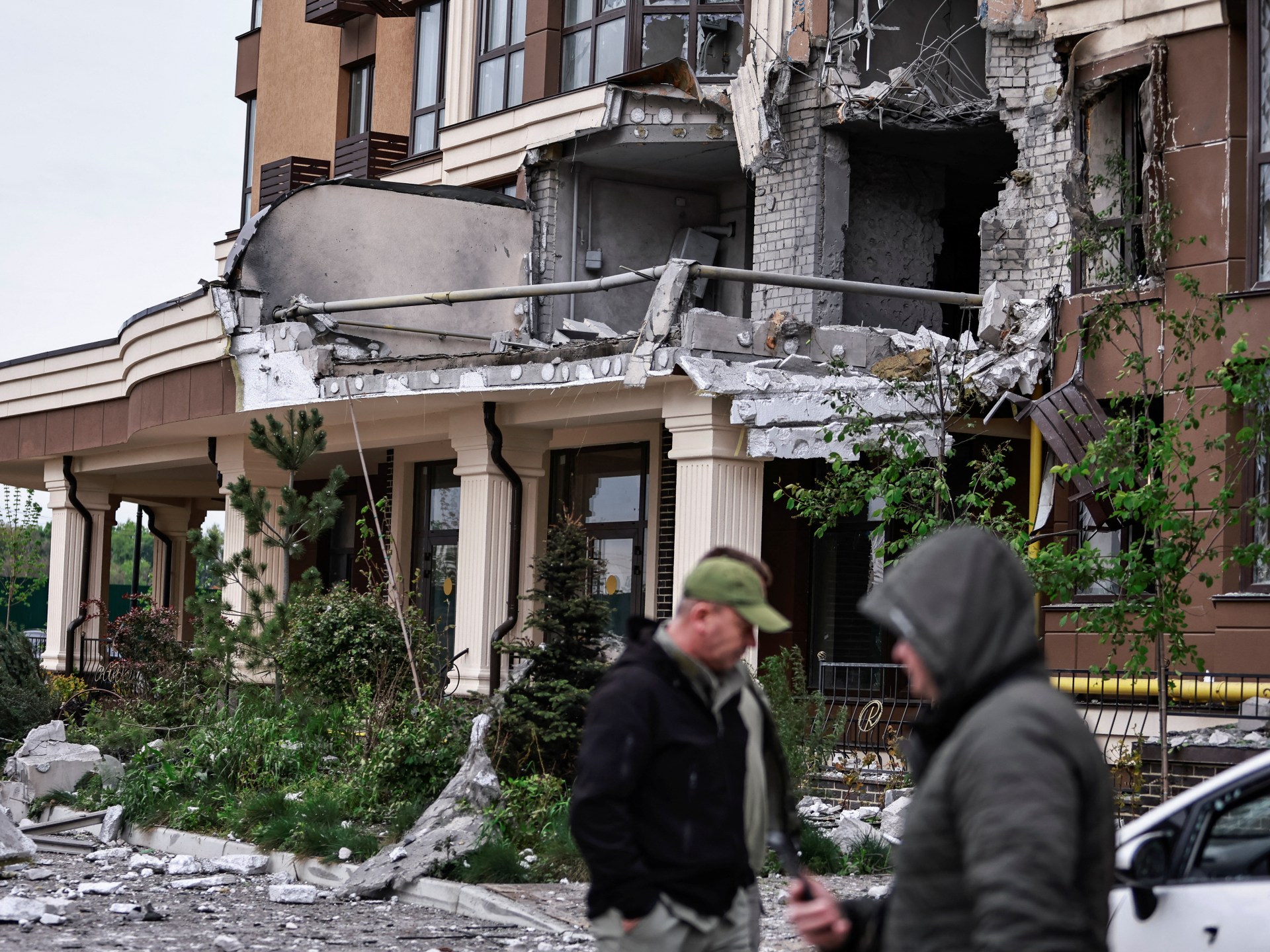
The Donald Trump administration last week approved its first sale of weapons to Ukraine after signing a memorandum of intent to exploit Ukrainian mineral wealth, suggesting that US foreign and defence policy under its current president will be driven by economic policy.
The US Defense Security Cooperation Agency (DSCA) announced on May 2 that the Trump administration had approved the sale of parts, maintenance and training for F-16 fighter jets to Ukraine worth $310m.
Defence newspaper The War Zone had previously said decommissioned F-16s were being shipped from a US Air Force graveyard in Arizona to Ukraine for spare parts, and published photos of partially dismantled F-16 fuselages being loaded onto a Ukrainian Antonov-124 transport plane at Tucson International Airport on May 1.
The US sale announcement did not include operational F-16 aircraft or missiles, but European allies of Ukraine have reportedly promised a total of 85 working F-16s.
This sale represented the first military aid from the Trump administration to Ukraine, and the first aid Ukraine would be paying for.
The previous administration of President Joe Biden provided $130bn in financial and military grants to Ukraine.

Ukrainian President Volodymyr Zelenskyy first publicly offered to buy US weapons systems on April 15, specifically asking for Patriot air defence systems.
The US sale followed the April 30 signing of a memorandum by US Treasury Secretary Scott Bessent and Ukrainian First Deputy Prime Minister Yulia Svyrydenko to jointly exploit new mineral deposits in Ukraine, including metals, oil and gas.
“This agreement signals clearly to Russia that the Trump administration is committed to a peace process centred on a free, sovereign and prosperous Ukraine over the long term,” said Bessent.
The memorandum said half of the proceeds from royalties and licensing fees payable to the government of Ukraine will be put into an investment fund for reconstruction purposes. It did not stipulate whether US investors would similarly invest any proportion of their proceeds, or if the US government would facilitate investment. Nor did the memorandum specify a timeframe for investment.
Svyrydenko said the US government would contribute to the reconstruction fund, without specifying how much.
Zelenskyy called it “now truly an equal partnership” in his Mayday evening address and said it would allow the US and Ukraine “to make money in partnership”.
“This partnership sends a strong message to Russia – the United States has skin in the game and is committed to Ukraine’s long-term success,” said a White House statement.
Trump steps back from peace deal
A day after signing the minerals deal, the Trump administration began to distance itself from the prospect of peace in Ukraine, despite Trump’s promise to deliver it quickly after his inauguration.
The administration delivered a ceasefire offer to Russia and Ukraine on April 17, calling it “final”.
“It’s going to be up to them to come to an agreement and stop this brutal, brutal conflict,” US Vice President JD Vance told Fox News on May 1.
“We’re not going to fly around the world organising mediation meetings. Now it’s up to the two sides,” said State Department spokesperson Tammy Bruce.

US Secretary of State and Acting National Security Advisor Marco Rubio told Fox News on the same day, “We’ve got so many, I would argue even more important, issues going on around the world,” referencing “what’s happening in China” and “Iran’s nuclear ambition”.
Whereas Ukraine has agreed to a US 30-day ceasefire proposal, Russia has not, proposing instead a three-day ceasefire to protect 29 international leaders attending a May 9 victory parade in Moscow to mark the end of the Second World War.
Zelenskyy has dismissed that request. On May 9, he called on Putin again to “a 30-day silence. But it must be real. No missile or drone strikes, no hundreds of assaults on the front… The Russians… must prove their willingness to end the war.”
Russian Foreign Ministry spokesperson Maria Zakharova responded by saying Zelenskyy “unambiguously threatened world leaders”.
Kremlin spokesman Dmitry Peskov told reporters the point of the three-day truce was “to test Kyiv’s readiness to find ways for a long-term sustainable peace”.
Russian Foreign Minister Sergey Lavrov told Brazil’s O Globo newspaper, “The ball is not in our court. [Kyiv] has not shown readiness for negotiations so far.”
Is Russia serious about peace?
Russia has prosecuted its war against Ukraine to the fullest, launching 1,300 assaults since the beginning of May.
Russia suffered 35,000 casualties in April, and just less than 126,000 in the first four months of 2025, said Ukraine’s Ministry of Defence – the equivalent of three rifle divisions. During that time, Russia occupied 1,627 sq km (628 square miles), a figure that included the recapture of its own Kursk region in March, according to the Institute for the Study of War (ISW).
Al Jazeera is unable to independently verify casualty tolls.
However, the ISW said Russian gains had “slowed as Russian forces come up against more well-defended Ukrainian positions in and around larger towns such as Kupiansk, Chasiv Yar, Toretsk, and Pokrovsk over the last four months”.
Ukrainian commander-in-chief Oleksandr Syrskii said the main threats were in “primarily Sumy and Kursk, Pokrovsky, Novopavlovsk”.
Russia has been intensifying its use of controlled air bombs (CABs) this year, said Ukraine’s Joint Forces Task Force, dropping 5,000 in April versus 4,800 in March, 3,370 in February and 1,830 in January.
Ukraine considers these 1.5-tonne bombs one of its biggest difficulties on the front lines. Neutralising Russia’s ability to launch them from planes deep inside Russia was its main reason for requesting long-range strike capability from the former administration of President Joe Biden.

Russia also stepped up long-range strikes against Ukraine’s cities.
Overnight on May 1, Russia fired five Iskander ballistic missiles and 170 drones and decoys. Two more Iskanders and 183 drones were launched on May 2. The northern city of Kharkiv, just 30km (19 miles) from the Russian border, was particularly hard-hit, with 10 fires recorded in various districts of the city, said the State Emergency Service. Some 44 people were injured. Russia struck Kharkiv again days later, engulfing its commercial market in flames.
Russia launched 165 drones on May 3 and 116 drones along with 2 Iskander missiles the following day. On Wednesday, a ballistic missile and drones struck Kyiv, killing a mother and son.
“The Russians are asking for silence on May 9, but they themselves strike Ukraine every day,” wrote Zelenskyy on Telegram.
The ISW said “the Kremlin is attempting to prolong negotiations to extract additional concessions from the United States and Ukraine.”
Ukraine strikes back
Ukraine held its front line against an escalating Russian onslaught and struck targeted blows against Russia’s military machine.
Ukraine’s head of military intelligence, Kyrylo Budanov, told The War Zone that Ukrainian Magura-7 unmanned surface drones had successfully downed two Russian Sukhoi-30 fighter jets using AIM-9 Sidewinder missiles originally designed for air-to-air use.
The pilot of the first Russian Su-30 was rescued by a civilian ship near the port of Novorossiysk in the Black Sea. The second Su-30 fell over Crimea. The crew did not survive, said Budanov.
The downing of a Sukhoi by a surface drone was unprecedented, he added.
Ukrainian military intelligence pioneered the use of surface kamikaze drones to strike Russian Black Sea Fleet ships, and on December 31 used them to launch rockets, downing two Russian helicopters.
It was the first time surface drones had been used against air targets – another Ukrainian innovation.
Since late 2022, Ukraine has also pioneered the use of light, first-person-view drones to perform targeted munitions drops on enemy armour and personnel.
“Over the past two months – March and April – our drones have hit and destroyed over 160 thousand enemy targets,” wrote Syrskii on Telegram.

In April, drones destroyed more than 83,000 targets, 8 percent more than in March, he claimed, lauding the “effectiveness of Ukrainian unmanned systems”.
In addition, he said deep-strike weapons had hit 62 targets on Russian territory in April.
In the past week, Ukrainian drones torched the Fiber Optic Systems plant in Saransk, Republic of Mordovia, for the second time in a month, Russia’s only plant manufacturing fibre-optic cable used in unmanned aerial vehicles. They seemed to have also struck the nearby Saranskkabel machine-building plant.
Ukraine also struck the Instrument-Making Design Bureau in Tula, which produces antitank systems and small arms, as well as the Scientific-Production Association (SPLAV), which produces multiple-launch rocket systems.
Further, Ukraine claimed to have struck airbases in the Moscow and Kaluga regions, housing cruise missiles, Tupolev-22M3 strategic bombers and Su-27 and MiG-29 fighter jets.
“You are writing the history of the modern Ukrainian statehood,” Syrskii wrote on Telegram on Tuesday. “You are the modern history of Ukraine.”

-

 Middle East2 days ago
Middle East2 days agoWhat does the truce between the Houthis and the US mean for Yemenis? | Houthis
-
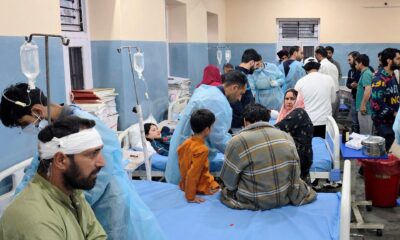
 Conflict Zones1 day ago
Conflict Zones1 day ago‘Don’t want war’: Kashmiri towns caught in deadly India-Pakistan crossfire | India-Pakistan Tensions
-

 Europe2 days ago
Europe2 days agoKylie Jenner and Timothée Chalamet make their red carpet debut in Rome
-
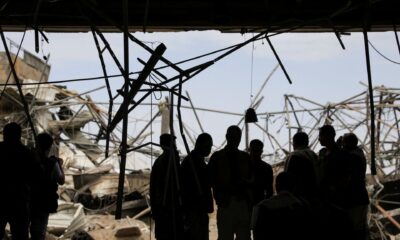
 Middle East1 day ago
Middle East1 day agoThe Take: What does Israel’s escalation with the Houthis mean for Yemen? | Houthis News
-

 Middle East2 days ago
Middle East2 days agoLibyan authorities reject report they will take in US deportees | Donald Trump News
-

 Lifestyle1 day ago
Lifestyle1 day ago‘Long Way Home’ has Ewan McGregor and Charley Boorman riding in Europe
-

 Asia1 day ago
Asia1 day agoChina’s Xi hails ‘stable and resilient’ Russia ties as he shows solidarity with Putin in Moscow
-

 Europe1 day ago
Europe1 day agoLive updates: Trump to make trade deal announcement with UK




